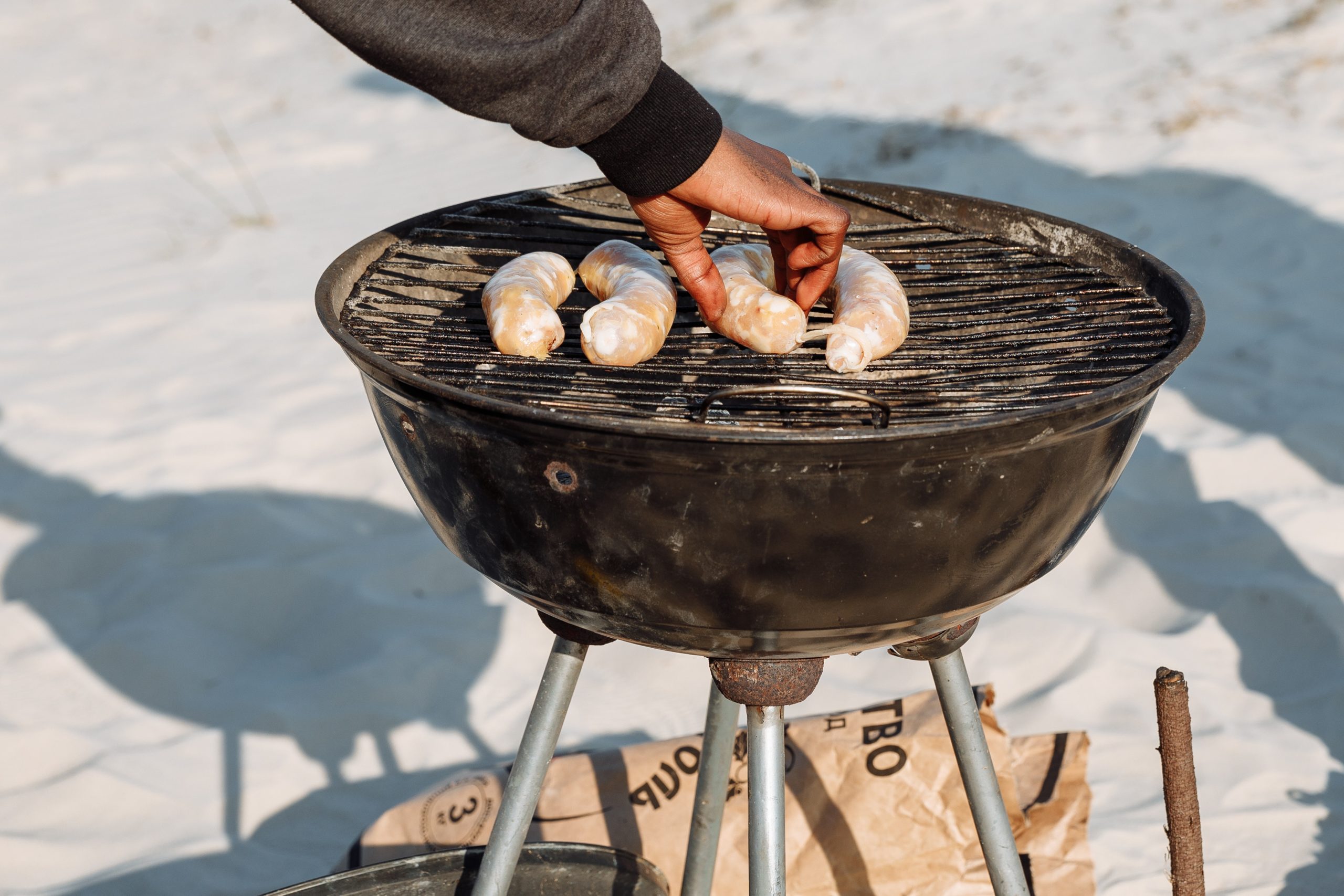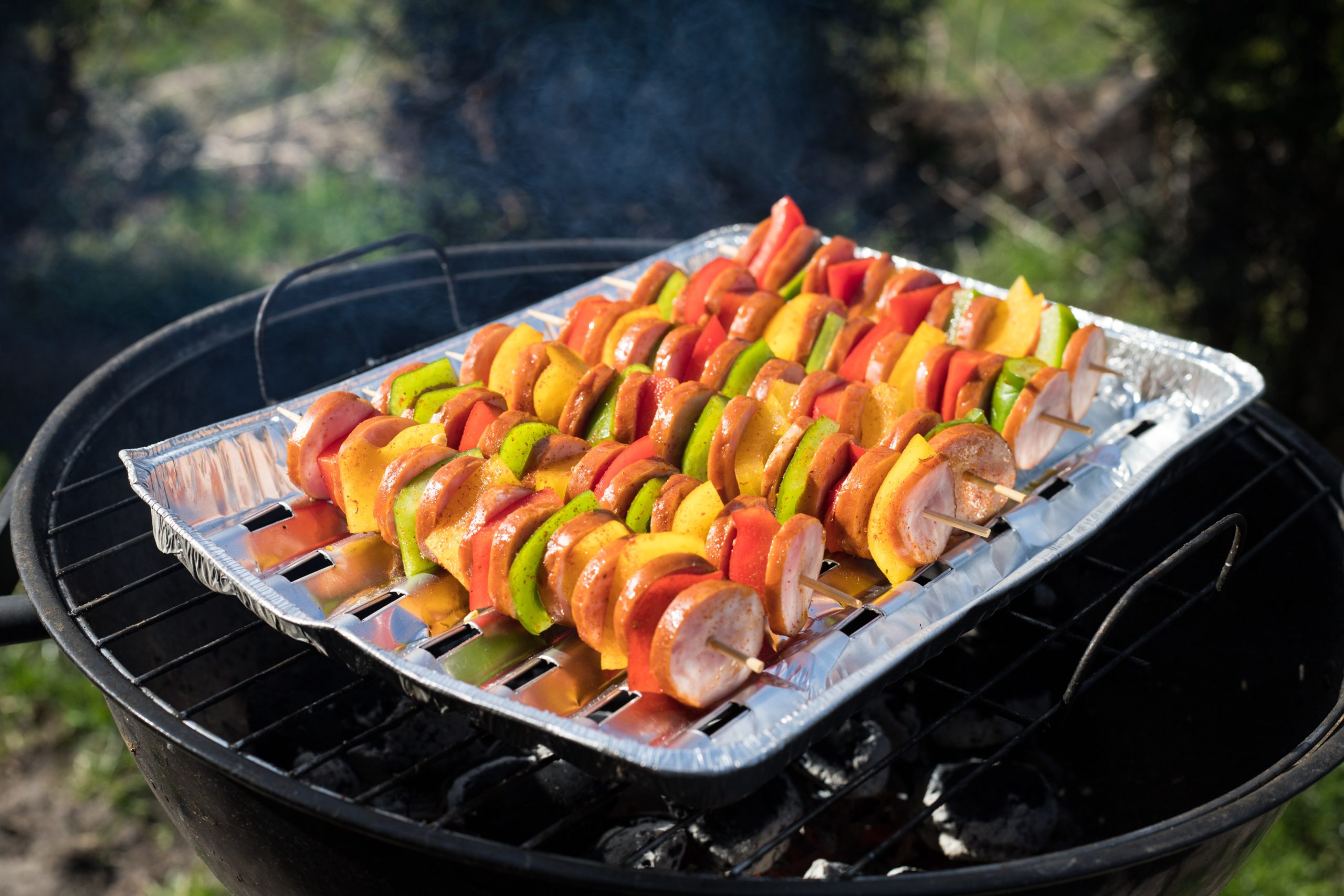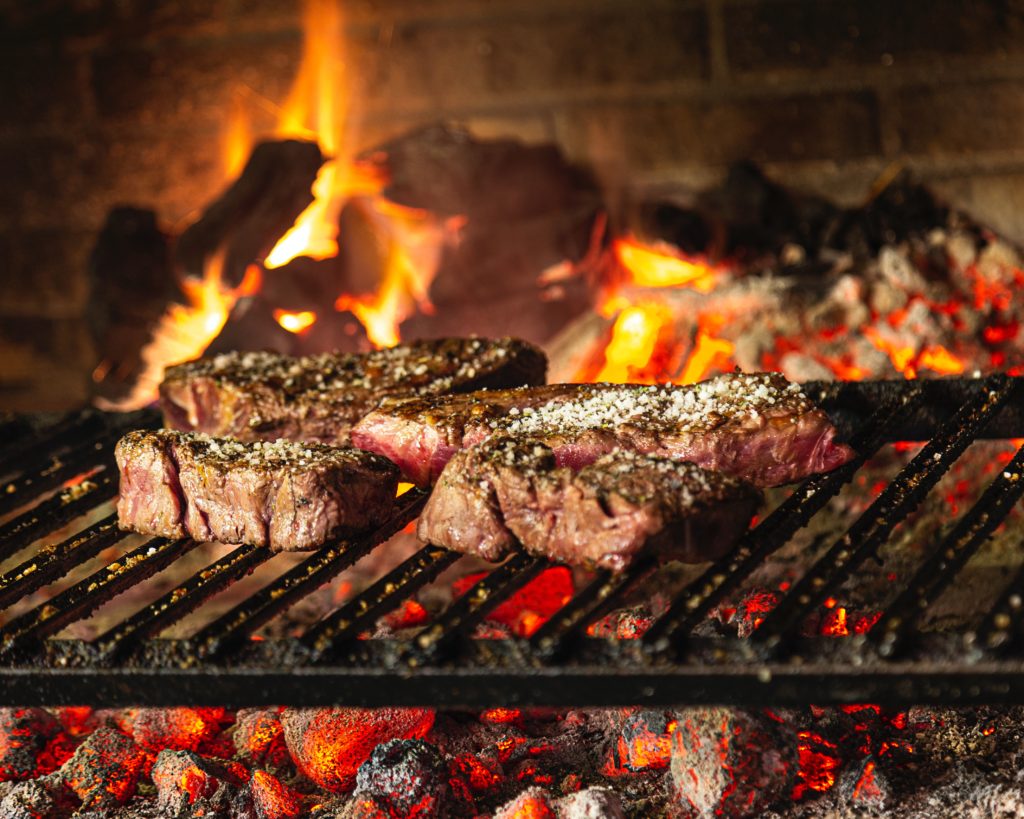Charcoal for cooking is a highly-efficient energy source. The raw material is obtained by burning wood, a renewable resource that is easily accessible and relatively cheap. Its production, transportation and consumption costs are very low, especially compared to other energy sources such as gas or electricity. However, some issues may make charcoal uneconomic. These issues include scarcity of wood and insufficient government regulations. Other issues include the informal nature of charcoal production and market.
Whether you’re planning on grilling out on the beach or you want to use your outdoor space for cooking food, you may wonder how to use charcoal for cooking. Before stoking the fire with charcoal, read this primer to learn about its uses, costs, and ecological impact. Learn about different types of charcoal and how to store them properly. Also, learn about the benefits of using wood instead of charcoal. Then, start grilling!
How to Use Charcoal Grill for Cooking?
You might be new to grilling or switching from a gas grill if you’re learning to use a charcoal grill.
Either way, learning to use a charcoal grill is like learning to drive a stick—once your know-how, you can drive any car. And if you know how to cook on a charcoal grill, it will be easy to cook on a gas grill. Here are some tips to help you get started.
Measuring the Coals
The first step to learning to use a charcoal grill is to learn about charcoal.
Propane gas is used to power a gas grill. There’s no need to measure it because it’s either on or off. Like a regular stove, you turn a knob on each burner to change the size and strength of the flame. With a charcoal grill, on the other hand, the fuel is, well, charcoal, so you need to put the right number of briquettes on the grill before you start cooking. Some grill grates have sides that open on hinges so you can add more charcoal while cooking. But this is only useful if you are slow-cooking or smoking a big piece of meat.
Remember that more fuel means more heat and that some foods need to be cooked at higher temperatures than others. Steaks and other thin cuts of meat need a very hot grill, like between 450 and 550 F. Pieces of chicken, vegetables, and fish need a temperature between 350 and 450 F. Low heat, between 250 and 350 F, is needed for pork ribs, whole chickens, and larger roasts. Regarding charcoal, a hot grill needs about 6 quarts and 100 briquettes. A medium grill needs between 3 and 4.5 quarts, and a low grill needs between 1.5 and 2 quarts.
Lighting the Coals
It just so happens that there is a tool that will help you measure out the right amount of charcoal but will also help you light it without any lighter fluid and get it hot in 20 minutes.
It’s called a chimney starter, and no one who grills with charcoal should be without one. You just put a piece of newspaper in the bottom of the canister, fill the chimney with the amount of charcoal you want, light the newspaper with a match, and set the chimney on the rack inside the grill (where the coals go, not atop the cooking grate). When the coals are red hot and glowing, carefully pour them into the grill’s bowl.
A standard chimney starter can hold 6 quarts, which is helpful. So, all you have to do to measure charcoal is fill the canister a quarter, half, three-quarters, or all the way, depending on how hot you want the grill to be.
Preparing the Cooking Grate
You can clean and oil the cooking grate while the coals are lit. Cleaning is mostly about scraping and brushing off any food stuck to the pan. To oil the grate, brush it with a cooking oil-soaked paper towel, which keeps your food from getting stuck. The next step is to get the grate ready to cook on. Once you’ve added the charcoal and set it up, put the grate in place, put the lid on, and wait three to four minutes.
Building a Fire
Even though it’s probably clear that more charcoal will make more heat, there’s something else to think about. When you add more coals, the pile gets bigger, and when the pile gets bigger, the coals are closer to the food.
If you’re only cooking one kind of food, you might want to spread those coals out evenly in your grill’s bowl. But you can control the temperature more precisely if you build a two-zone fire by filling one side of the grill bowl with charcoal and leaving the other side empty. This makes a hot zone and a cool zone, which is good for simultaneously cooking different kinds of food, like steaks and vegetables.
It also lets you move things around as they get close to being done so that they don’t get overcooked. Flare-ups, usually caused by fat dripping onto the coals, can also be stopped with a cool zone, and you can move the leaking item to the cool zone as the fire calms down. In short, it’s almost always best to build a fire with two areas.
Controlling the Temperature
You can control the temperature of your charcoal grill in more ways than just the amount of fuel and how high you pile it. A fire needs fuel, but it also needs air to burn. So, another way to control the temperature is to open and close the vents to control the flow of oxygen.
No matter what kind of grill it is, most charcoal grills will have at least one vent on the lid and one on the bottom of the bowl. So, the lid should be on the grill almost all the time. Grills are made to pull cool air in through the bottom vents, move it around the cooking surface, and then let smoke and hot air out through the top vents.
Both the top and bottom vents should be open at all times. Open them for the hottest fire possible. If you close the top vent halfway, the grill will be between 350 and 450 F, or medium. For low temperatures (250 to 350 F), only a quarter of the top vent should be open. Most of the time, the bottom vent should be fully open. Don’t close the vents all the way, or your fire will go out. Also, ensure the bottom vent isn’t blocked by ash or other debris.
The air moves, creating convection that helps food cook quickly and evenly. The shape of the lid is made to help this airflow. If you take it out, the flow stops, and you lose one of the most important ways to control the temperature.
What Kind of Grill should you Buy?
You’ll find that barbecue fans think their grill, charcoal, gas, electric, or pellet, is the best. But the best grill for you is the one that meets your needs, fits your lifestyle, and fits your budget. Before you decide what kind of grill to buy, you need to be honest with yourself about what you want from a grill:
Gas Grills
Most grills that are sold these days are gas grills. It tastes good, can be used in many ways, and is easy to make. The great thing about a gas grill is that you can heat it and start cooking in as little as 10 minutes. Just push the button to start it, let it heat up, and grill away. Perfect for a cook who does a lot of grilling. A gas grill might be the way to go if you like extras. Some gas grills have side cooktops, rotisserie kits, more than one burner, and even wifi so you can check on your food from your phone.
But there are a few things to remember, like how much fuel and space you need. You can get fuel for a gas grill from a natural gas line on your property or from a propane tank that you must change out when it runs out. Also, even the smallest gas grills need a fair amount of space because they can’t be used too close to a building. So a gas grill is probably not for you if you live in a city and your only outdoor space is a small balcony (and your building may not permit it).
Charcoal Grills
Some barbecue purists say that charcoal grills are the only way to grill because they taste better than gas grills. But there are some things to think about, especially the charcoal. Charcoal grills need—you guessed it—charcoal. This means you must buy briquettes or lump charcoal and have enough on hand whenever you want to grill. Charcoal also takes time to get a fire going. Usually, from the time you light the charcoal until you are ready to grill, you should plan on 20 to 30 minutes. Also, charcoal can’t be turned off as a gas grill can. You can, of course, put water on the coals, but doing so can hurt a charcoal grill.
If you grill often, using a charcoal grill will cost you much more fuel than using a gas grill. Even though most charcoal grills are cheaper than gas grills, the fuel cost will make up for the difference. Like gas grills, charcoal grills need a lot of space, so they don’t start fires.
Electric Grills
Electric grills have the least authentic taste but can be used anywhere. Electric grills can get hot quickly and don’t need any fuel besides a nearby electrical outlet. But you do lose a lot of flavors. Also, many electric grills don’t get hot enough to sear food, which is what you need to do on a grill. Depending on the rules in your area or the size of your balcony, you might only be able to use an electric grill.
Pellet Grills
Even though gas, charcoal, and electric grills are the most common, other kinds, like pellet grills, are also available. Hardwood pellets made from scrap wood are burned in a pellet grill, and they have a real wood flavor that’s better than charcoal grills, and they can also be used to smoke meat, giving you more options. But pellets can be hard to find and cost a lot. Pellet grills are also not cheap, and a good pellet grill costs about the same as a gas grill.
How to Light a Charcoal Grill?
When you use a charcoal grill, it’s not hard to get the fire going. Lighter fluid is one of the main reasons people get hurt while grilling, so you must be careful. Whether you use lighter fluid, you can safely light your charcoal grill.
Charcoal Starters
A charcoal chimney or something similar is the best way to get your charcoal going. A charcoal chimney doesn’t use lighter fluid. And instead, it uses newspapers. This means you don’t have to use a petroleum product that can change the taste and texture of your food. You put a couple of crumpled pieces of newspaper in the bottom of the chimney and then put charcoal on top. About 10 minutes after you light it, the charcoal will be ready to go on your grill.
An electric charcoal fire starter is another choice. You put it on your grill with the charcoal, giving the charcoal enough heat to get going. Now you can take the electric loop off and let the coals warm up. Before you start cooking, you can use either of these methods to let the coals burn down to ash. This makes sure that any glues or additives have been burned off. It’s best not to buy charcoal that lights itself since it has additives that work like lighter fluid. If these aren’t completely burned off, they can add bad tastes and chemicals to your food.
Preparing your Grill
Make sure you’ve read and understood the instructions for your charcoal grill. Smoke that can make food taste bad can be cut down on by cleaning the grill before each use. Always clean the grill well, getting rid of ash and grease.
Figure out how much charcoal you will need. For burgers and steaks, you will need one layer, and for roasts and whole chickens, you will need two layers. You need to give the charcoal time to light and heat up, and about 20 minutes will pass before you can start cooking your food.
Using Lighter Fluid
Learn how to use lighter fluid correctly and safely if you don’t have a charcoal chimney or an electric charcoal fire starter. You don’t have to use lighter fluid made from petroleum and look for bio-fuel lighter fluid made from oils and alcohols from plants. This is the most basic way to start a fire with lighter fluid:
- Pour enough charcoal into the grill to make the layers needed.
- Stack the charcoal into a cone or pyramid shape.
- Pour lighter fluid over the charcoal cone, using more in the center than around the edges. Use about 1/4 cup of fluid for each pound of charcoal.
- Let the fluid sit on the coals for about 30 seconds.
- Light the charcoal from the bottom on at least two sides with a long match.
- Let coals burn until all coals are white on the surface.
- With a long-handled instrument, spread the coals evenly across the coal grate.
- Close the lid and wait five minutes.
- Open the lid, replace the cooking grate, add the food and start cooking.
Safety Precautions
Never put lighter fluid on coals that are already on fire. The heat will vaporize the lighter fluid even if there is no flame. When the vapor meets a flame, it can cause a big fire. It would help if you never put charcoal on a gas grill. You can’t do this if you’ve run out of gas and have to find a charcoal grill or fill up on gas.
Types
There are several options if you’re a beginner griller and wondering which type of charcoal to buy. Briquettes and lump charcoal both have their advantages and disadvantages. While lump charcoal is easier to light and cook with, it has a shorter shelf life and requires low oxygen to burn thoroughly. Lump charcoal is also more expensive than briquettes and is best suited for grilling turkey burgers, sausages, and most vegetables.
Briquettes are typically made of compressed sawdust, wood byproducts, or mineral carbon. Briquettes burn slower and produce lower temperatures, while lumps have a wider variation. A typical lump charcoal bag contains a mix of dust, chips, and large chunks. However, lumps tend to produce more smoke and ash than briquettes. For this reason, briquettes are best suited for cooking in small quantities.
How to Store Charcoal?
If you don’t have a grill or a garage, you can store charcoal in a trash can or a wheeled storage bin. A trash can with a lid fits 24 lbs. of lump charcoal and is a convenient size to carry around. If you prefer an airtight container that can withstand high humidity, consider using a heavy-duty trash bag as an insert before the charcoal. The trash bag will help create a moisture-proof barrier, which is especially important if you live in an area with high humidity.
Despite its porous nature, charcoal can remain relatively fresh for years, as long as it is stored properly. The storage area should be cool, free of excess humidity and moisture, and preferably out of direct sunlight. Avoid storing charcoal in a damp area, such as a basement, as it absorbs moisture easily and turns to dust. If possible, purchase containers made of plastic that will withstand moisture and mold.
How to Clean a Grill?
It would help if you gave your grill a quick clean before each cookout to keep it in good shape. Here’s how to clean a grill, ready for all summer barbecues.
Brush the grates: After you’re done cooking, use a grill brush to remove any big pieces of food from the grate while it’s still hot. Some of the baked-on mess will be easier to clean up when it’s hot.
Clean the grates: Even after brushing, if the grates are still a little dirty, you can clean them by soaking them in hot water and dish soap. Get rid of any extra dirt with a good dish scrubber.
Remove the ash: When the grill is completely cool, remove the grates and empty any ash or leftover coals into a metal container.
Clean the interior: If the bowl of your grill is getting dirty, use a wire brush or steel wool to get rid of any food that has stuck to it. Scrub the inside with warm water and dish soap, then rinse it.
Wipe the exterior: Give the outside of your grill a quick wipe with warm water and soap to keep it looking shiny.
Conclusion
While charcoal is widely used for cooking in the developing world, it is a major expense for poor households. In countries like Malawi, 60 percent of the population lives in extreme poverty, with average incomes of just $1.25 to $2 a day. For such people, the costs of charcoal for cooking are the most significant. The poorest households buy the least charcoal and pay the highest prices. In urban areas, charcoal for cooking costs at least USD 0.5 per person per day, enabling the household to spend the remaining money on other essentials. Sadly, many Zambians cannot afford even this basic need.


